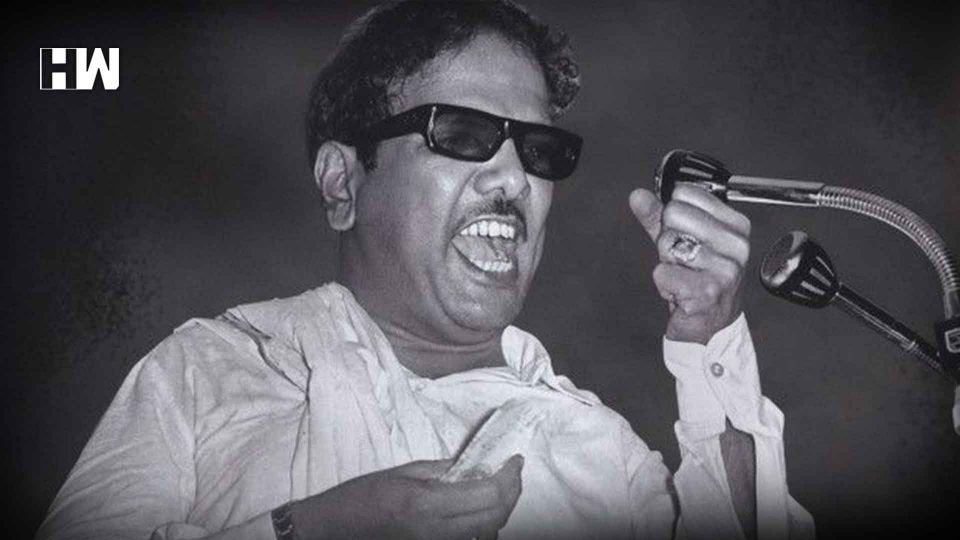He is still the popular Kalaignar for his supporters. As a matter of fact, Tamil Nadu politics cannot be described without M Karunanidhi.
Situated nearly 300 kms away from Chennai, Kallakudi is a small Village in Tamil Nadu’s Ariyalur. The tiny village on the map of Tamil Nadu has a sizable population. Though the village doesn’t often make it to national headlines, the quiet village stands as a witness to the beginning of political relevance of Karunanidhi.
At 94 years, the DMK Chief M. Karunanidhi is India’s one of the oldest politicians. He has been at the helm of Dravida Munnetra Kazhgham since last 50 years, is the longest-serving president of an Indian party. Even at this age, he hasn’t let go of his ambition to become the chief minister of Tamil Nadu again, for the sixth time. Senior Journalist still praises his political sharpness at this age. He is still the popular Kalaignar for his supporters. For the matter of fact, Tamil Nadu politics cannot be described without M Karunanidhi.
However, the popularity and the support wasn’t spoon-fed to him. For the Dravidian leader, it all started in the small village of Tamil Nadu-Kallakudi.

Around the 1950s, Dalmia- a north Indian businessman set up a cement factory in Kallakudi. To honour his contribution to the local development, the original name Kallakudi was changed and replaced with Dalmiapuram. With Dravidian values rooted deep in the Tamil soil, the locals and activist saw it as an invasion of north Indians on Tamilians, an attempt to impose Hindi on the Dravidian heartland which took pride in its native language. The DMK decided to launch an agitation to restore the original name of the village Kallakudi.
On July 15, 1953, under the leadership of Karunanidhi, the protestors took to streets and pasted papers with Kallakudi written on it on the major buildings of the village. They even pasted the papers on the name boards painted at the railway station. As the protest was raging a train arrived at the station around 10 AM. However, the DMK cadre blocked the rail track.

To mark dissent, Karunanidhi and four other DMK workers laid on the railway track and refused to move aside. The police arrested all the five, including Karunanidhi. However, that did not deter the DMK Protestors. An hour later, next batch of protestors laid on the tracks blocking the train route. This time 26 protestors were arrested. But the protestors did not stop. At around 2 PM another batch of about 40 protestors led by Kannadasan laid on the track. However, police responded with lathi-charge this time.
Though it was just a symbolic form of protest, the DMK cadre actually risking their lives to protect the Tamilian heritage struck a chord with people. They started shouting and opposing the lathi-charge. As the police realized, the lathi-charge did not work, they opened fire to disperse the swelling crowd. Ten protestors were injured in the firing while two innocent passengers too were hit by bullets and died.

The dramatic lying down in front of the train caught national headlines the next day while the shots of criticism were fired upon police for mishandling the situation. Following the arrest, Karunanidhi and other protestors were sentenced to five months in prison and a fine of 35 Rupees each. However, instead of paying a fine Karunanidhi chose to spend one more month in jail. Immediately, Karunanidhi became a hero in this agitation and his popularity climbed also within the party. Though the then Indian and Madras government refused to restore the original name of the village to Kallakudi, the successful leadership of the agitation earned Karunanidhi the title of “Kallakudi Veerar” (warrior of Kallakudi)
Years later, when the DMK government rose to power in 1967 election, it changed the name Dalmiapuram to Kallakudi with the approval of the Indian government. Though the surrounding areas in the village are still known as Dalmiapuram, as a symbol to honour the historic protest the name of the railway station was changed to Kallakudi.
As an independent media platform, we do not take advertisements from governments and corporate houses. It is you, our readers, who have supported us on our journey to do honest and unbiased journalism. Please contribute, so that we can continue to do the same in future.

